Today we are going to continue to our multi-episode look at the results of the 2009 Winter Wonderland Workshop. I lead the nine day tour around central and eastern Hokkaido, the northern-most island of Japan, from February 16th to the 24th, 2009. The tour is formatted to concentrate on Wildlife photography for the first 5 days, then move on to do Landscape work for the last four days. On the afternoon of the fifth day, we’d driven through a snow storm to a hotel in between the Shiretoko peninsula and the Daisetsuzan mountain range. We’d dropped two of the participants that were with us just for the first leg off at the airport, and we were to pick up one more participant the following lunch time, over near the mountain range. We pick up the trail on the evening of the 20th of February, as I just have to share a mail with you, that I picked up at the hotel on the fifth night.
So, we’d decided to not shoot in the snow storm when we got to the hotel at a place called Onneyu, between Shiretoko and Asahikawa, where we’d be heading tomorrow. This was not so much because we were scared of the weather, as you’ll see, we shot in some pretty harsh conditions over the next few days. Rather, everyone was just pretty tired, and the afternoon of this middle day is kind of like a relaxing stop-gap, although we did have a nice morning in the National Park at Shiretoko.
After dinner we found that there was wireless internet in the hotel lobby, so we bought a few tinnies and sat with our laptops to catch up on mail and show photos etc. It was on this evening that I got a mail from a listener that I simply have to read out to you. It’s a bit long, so bear with me, but I really don’t want to paraphrase as I’d probably ruin it.
Dear Martin,
Over the last six months I have begun each day by listening to your podcast as I work out on my elliptical trainer. Although I’m not a big fan of my exercise routine, your podcast has turned it into something that I look forward to every morning. Whether you are covering a familiar topic or something completely new, your friendly manner and systematic approach to each week’s subject allows me to glean something from every episode. Thank you for the work you put into each one of your podcasts. I want to thank you in particular for your episode on reading MTF charts. Although I’d read several articles on the subject, it was your podcast that finally allowed me to retain an understanding of the subject. You episode on aperture also deserves mention. While I’ve understood the effects of aperture on image for as long as I can remember, your presentation and accompanying diagrams helped me understand for the first time why things work the way they do.
I’ve also appreciated the opportunity to see some of the Japanese landscape. Your first Hokkaido workshop was a real treat. After listening to the episode in which you described the itinerary and all the necessary gear, I skipped ahead to your podcasts about the trip. It almost felt as though I was on the trip with you. You have a knack for sharing the details of your adventures in such a way that they are always engaging and entertaining – and your images are outstanding.
I’m currently working my way through July 2008. Tomorrow morning you bid farewell to your 100-400 zoom. In six weeks or so I expect to be fully caught up, a milestone I’ve been looking forward to for some time now. There have been many occasions where I have wanted to participate in some activity or to simply respond to something you’ve said in a podcast but have held back because of the fact that I am so far behind everyone else.
Of course, catching up has an obvious downside as well – which brings me to a small favor I’d like to ask of you. Martin, over the last six months we have become good friends. Although some could argue that this friendship is all in my head, I know that you’re not the type of person who would let down a good friend, even if the friendship is, shall we say, untraditional. So here’s the favor: I need you to start creating daily podcasts. The current length is good; I just need one a day. I realize that this will represent a small amount of extra work on your part, which is why I’m giving you six weeks notice. The alternative is not pretty: I get completely caught up with your podcast and no longer have a reason to work out on a daily basis. I become fat and unhealthy, eventually reaching a premature end. My wife is left to raise our six year old son by herself. I never get to meet my grandkids. I know this is not something you would want to see happen to a good friend so I will just thank you in advance for this minor accommodation.
With that small matter out of the way, allow me to once again thank you for your podcast. I’m looking forward to seeing the latest images from this year’s Hokkaido workshop.
Sincerely,
Tim Linn
www.tlinn.com
I read this out to the group in that hotel lobby and like me at first they all looked a bit shocked, as if to say is this guy for real! Then as we got further down the mail they realized that it is a joke, and everyone was in stitches with laughter. Even funnier, when I mailed Tim to ask if it was OK for me to read this out here, his reply was as follows…
No worries, Martin. I appreciate your taking time out from the Hokkaido workshop to respond. Please feel free to read my e-mail in part or in full as you see fit. I realize that the new daily podcast regimen may leave you scrambling for topics at first…
This is just amazing. Thanks so much for the mail Tim. By the way, Tim also supplied a Web site address, www.tlinn.com, which I checked out and Tim has some amazing photos, so please do drop by when you have a minute to check them out.
So, moving on, the following morning we started another few hour drive over to Asahikawa, one of the bigger cities in the central part of the island of Hokkaido. First, we were to pick up Chris from the airport, who would be joining us for the last three days of Landscape shooting. The airport is literally right on the way to where we are heading, which is up into the Daisetsuzan mountain range and national park. The plan was to go up Mount Asashi in a cable car, and try to shoot the winter scenes up there. Although the skies were clear for most of the morning, as we drove closer to the mountain we could see that it was looking pretty bleak up there. Mount Asahi or Asahidake, is the tallest mountain in the Daisetsuzan Mountain range, and Hokkaido for that matter, at 2,291 meters or 7,516 ft. Mountains this big generally make their own weather, and today was no exception.
We had planned to shoot in the area on this first afternoon, and then go up to the top in the cable car the following morning. The weather forecast was not good though, with lots of snow still forecast, and as it was not actually snowing near the cable car station, we decided to go up to the top in the hope of a break in the clouds. When we got up there though, it was just a total blizzard at the top. We took a quick walk out from the station into the snow, and I was thinking that we might be able to see something if we did get a break, but it was pretty pointless. We decided to go back down, and shoot around the cable car station. We’d seen skiers heading out to ski down, and we figured that we could probably walk up the ski slope a little, and see what we could capture. As you can see from image number 2176, there was the odd break in the cloud through the afternoon.
As these rare patches of blue rolled across the sky, I lined this patch up so that it kind of is where the leaves would be if it was summer time. I shot this with my 14mm F2.8 II lens, sitting in the deep snow at the foot of the tree. At ISO 100 with an aperture of F8, this required a shutter speed of 1/125 of a second. I have a great photo of Graham, or N.S.W. as you’ll know him from the forums at martinbaileyphotography.com, as he lay on the ground below this tree with my 14mm lens, shooting something similar. I am saving that photo for the book of the trip though, that I’ll put together in the coming months with photos from all the participants.
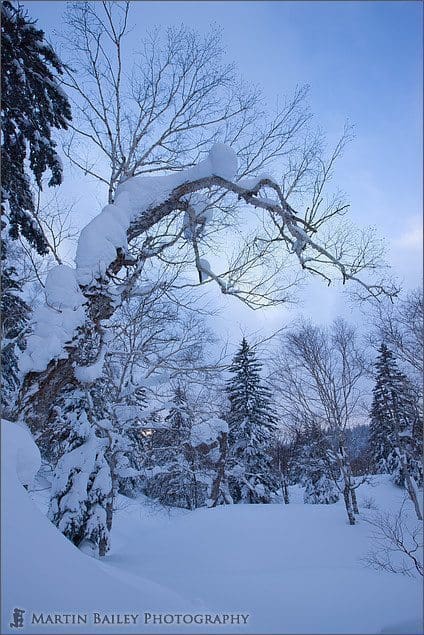 We walked a fair way up the ski slope in the couple of hours towards the end of the afternoon, and had a great time shooting the trees either side. In image number 2177, you might be able to make out the warmth of the sun shining faintly through the cloud and through the gaps in the trees about a third of the way up the frame. This is a great old tree that we found, as it bent right over, from the weight of the snow that it has to bear each year. Here still at ISO 100 and F8, I had to use a 1/20th of a second shutter speed now, as the sun got close to the horizon and the light dropped pretty significantly. The snow kept falling on and off through the afternoon, so I should note that I was using the 1Ds Mark III for shooting out here. I think I mentioned earlier in the series, but whenever the weather was bad, if I only needed one body, it was always the 1Ds Mark III. Although we were told that the 5D Mark II had improved weather sealing over the original 5D, David Lee from the MBP community mailed me the night before I left to point out an article that mentioned a number of 5D Mark IIs that had failed on a trip to Iceland I think it was, in similar conditions to those that we’d be shooting in. There were two 5D Mark IIs on the trip, and we did get them cold and wet, without them failing, but still, I was being cautious. The images from the 1Ds Mark III and the 5D Mark II are the same size and the 1Ds is built like a tank, so it was an obvious choice, but in the interests of explaining my thought process I thought I’d mention this. Another reason that I mention this is because I wondered if the 5D Mark II would become my new baby, after picking this up basically for use as a second camera. I’m pleased to say from my perspective that it hasn’t. I bought the 1Ds for its rugged build, among other things. I’m very careful with my gear, but still, in severe weather conditions, it’s nice not to have to mollycoddle your gear, and the 1Ds is fine with that. If you have splash and dust proof L lenses attached, you really don’t have to worry about getting it cold and wet, apart from keeping the drops of water off the front of the lens of course, which we had to pay a lot of attention too.
We walked a fair way up the ski slope in the couple of hours towards the end of the afternoon, and had a great time shooting the trees either side. In image number 2177, you might be able to make out the warmth of the sun shining faintly through the cloud and through the gaps in the trees about a third of the way up the frame. This is a great old tree that we found, as it bent right over, from the weight of the snow that it has to bear each year. Here still at ISO 100 and F8, I had to use a 1/20th of a second shutter speed now, as the sun got close to the horizon and the light dropped pretty significantly. The snow kept falling on and off through the afternoon, so I should note that I was using the 1Ds Mark III for shooting out here. I think I mentioned earlier in the series, but whenever the weather was bad, if I only needed one body, it was always the 1Ds Mark III. Although we were told that the 5D Mark II had improved weather sealing over the original 5D, David Lee from the MBP community mailed me the night before I left to point out an article that mentioned a number of 5D Mark IIs that had failed on a trip to Iceland I think it was, in similar conditions to those that we’d be shooting in. There were two 5D Mark IIs on the trip, and we did get them cold and wet, without them failing, but still, I was being cautious. The images from the 1Ds Mark III and the 5D Mark II are the same size and the 1Ds is built like a tank, so it was an obvious choice, but in the interests of explaining my thought process I thought I’d mention this. Another reason that I mention this is because I wondered if the 5D Mark II would become my new baby, after picking this up basically for use as a second camera. I’m pleased to say from my perspective that it hasn’t. I bought the 1Ds for its rugged build, among other things. I’m very careful with my gear, but still, in severe weather conditions, it’s nice not to have to mollycoddle your gear, and the 1Ds is fine with that. If you have splash and dust proof L lenses attached, you really don’t have to worry about getting it cold and wet, apart from keeping the drops of water off the front of the lens of course, which we had to pay a lot of attention too.
So, the sun went down on the 21st, and we went to the hotel, hoping for clear weather in the morning. We really wanted to get to the top of the mountain to see if we could shoot the summit and surrounding scenery from the cable car station. The station was a three minute walk in the snow from the hotel, so we let the bus driver have a lie in on the 22nd. After all, it was a Sunday. Not that this mattered to us very much. We’d been on the road for seven days now, and it was difficult to keep track of which day of the week it was. As we walked across to the cable car station though, we could see that there would not be much point in going up there again. Conditions were if anything even worse than the previous day.
 We walked around and shot more in the area though, getting some nice winter images, like the brook that we see in image number 2179. This is a 3.2 second exposure at F11, ISO 100. We actually all got a very similar shot to this, and shared the Singh-Ray Variable ND filter to dial-in some darkness. We captured the mist rising from the stream, as there are hot springs that flow into the water. We were standing on a volcanic mountain after-all. I’ve actually become very disappointed with the Variable ND filter though. I bought it for use with my 16-35mm F2.8 II lens, but in some conditions, and this was one, you can’t really turn it very far without getting some nasty banding and even a large black cross across the entire frame as I did for this when I turned it a little more than I had here. Even with this image, I was starting to get the banding, and had to use local adjustments in Lightroom to correct this. I do find the Vari-ND useful on longer telephoto lenses, like the 70-200mm, but on ultra-wide angle, to be honest, their use is very limited.
We walked around and shot more in the area though, getting some nice winter images, like the brook that we see in image number 2179. This is a 3.2 second exposure at F11, ISO 100. We actually all got a very similar shot to this, and shared the Singh-Ray Variable ND filter to dial-in some darkness. We captured the mist rising from the stream, as there are hot springs that flow into the water. We were standing on a volcanic mountain after-all. I’ve actually become very disappointed with the Variable ND filter though. I bought it for use with my 16-35mm F2.8 II lens, but in some conditions, and this was one, you can’t really turn it very far without getting some nasty banding and even a large black cross across the entire frame as I did for this when I turned it a little more than I had here. Even with this image, I was starting to get the banding, and had to use local adjustments in Lightroom to correct this. I do find the Vari-ND useful on longer telephoto lenses, like the 70-200mm, but on ultra-wide angle, to be honest, their use is very limited.
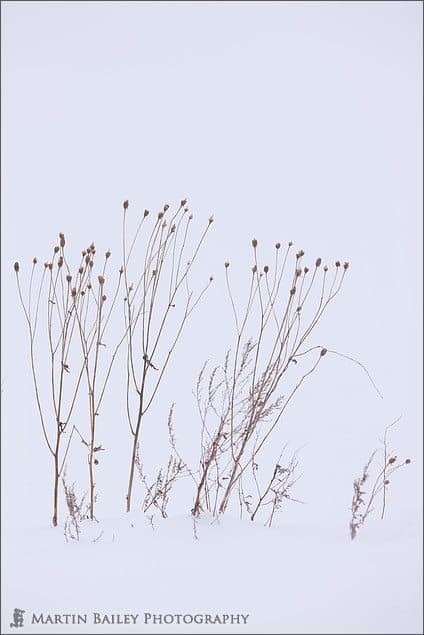 After breakfast, the weather was pretty much the same, so we gave up on going back up in the cable car. This was the second thing that we were not able to do on the trip, which again, as I said before, cannot be helped, because we’re dealing with nature here. We decided to make a start on the next leg of the plan, so we made our way 45 minutes or so down the road to the Biei area. When we arrived, it was blowing a gale and snow was driving at us horizontally. You actually wouldn’t know it looking at the next shot, number 2180. This looks quite peaceful, but actually the snow is really driving past me towards these dried up grasses at the side of the road. They were blowing about pretty badly too, but things that are getting blown around generally tend to sway pretty rhythmically so you can time your shots to happen at one extreme of their motion, before swaying back the other way. Plus, I raised the ISO to 200, which with an aperture of F5.6 required a shutter speed of 1/1000th of a second for this, so it was easy enough to stop the motion. Although there’s literally no way to tell, what you are looking at here is the snow on the bank at the side of the road below the plants, and then pretty much sky above that. The snow has just whited it all out, that’s all.
After breakfast, the weather was pretty much the same, so we gave up on going back up in the cable car. This was the second thing that we were not able to do on the trip, which again, as I said before, cannot be helped, because we’re dealing with nature here. We decided to make a start on the next leg of the plan, so we made our way 45 minutes or so down the road to the Biei area. When we arrived, it was blowing a gale and snow was driving at us horizontally. You actually wouldn’t know it looking at the next shot, number 2180. This looks quite peaceful, but actually the snow is really driving past me towards these dried up grasses at the side of the road. They were blowing about pretty badly too, but things that are getting blown around generally tend to sway pretty rhythmically so you can time your shots to happen at one extreme of their motion, before swaying back the other way. Plus, I raised the ISO to 200, which with an aperture of F5.6 required a shutter speed of 1/1000th of a second for this, so it was easy enough to stop the motion. Although there’s literally no way to tell, what you are looking at here is the snow on the bank at the side of the road below the plants, and then pretty much sky above that. The snow has just whited it all out, that’s all.
We’d actually stopped the bus at this location though to shoot a tree that we shot a number of times over the next couple of days. I won’t bring up the version shot from this exact location right now, but we drove around a little further, to a different view point, from where I shot probably my favourite shot of this tree from the trip, which is image number 2183. Here again, we were shooting in driving snow, and this time it was coming almost straight at us. I shot this with the 300mm F2.8 lens, which has a big front element, and I must have wiped the front element at least ten times while we were shooting at this location. Even with the hood on, there is no way to stop the snow from hitting the front element. What I do is keep the camera turned away from the snow, until I’m ready to shoot, then spin it back around, compose, get a shot or two, then turn it away again. Pretty much every time I did this, I had to wipe the front element again. I really do love this shot though. I have a few that have virtually nothing else visible except the tree, surround by that very light grayish white. I really like them too, but this one has that texture and detail in the hill across the bottom third of the frame giving us just a little more context. I printed this out on 13×19 paper last week, and it literally had the hair on the back of my head standing up. I’ve said it before, but I’ll say it again, it is so gratifying to create a good quality print of something like this. Many of the shots excite me on the monitor too, but it’s just a totally different experience, holding that heavy, tactile paper in your hand.
This tree doesn’t have a name that I was able to find at least, but many of the trees in the Biei area are actually named, like the Parent and Child trees that we can see in image number 2184. These are shot from the same place at the last image. I don’t think I even uprooted my tripod for this. You just have to spin around about 90 degrees to your right. The base of these trees is hidden slightly by the hill on which they stand, and at this time of year it’s pretty much impossible to get to a location that you can shoot them without that being the case. I still like the resulting image though, with the driving snow again whiting out much of the scene, leaving just daddy tree on the right, mummy tree on the left, and junior in the middle. There is just a tiny bit of texture and gradation in the foreground, but again, a very minimalistic look here. Another reason why I had to clean my lens so many times here was because there were only certain times where you could see the trees this well. Some of my shots were literally totally white, as the snow obscured the view of the trees totally.
It was pretty cold, and the snow was not only driving against the front element of the lens, but also in your face. Some of the guys had already gotten back on the bus, but some of us worked the scene a little longer. I would stay out as long as anyone else wants to anyway, but I’m lucky in that my hands actually get very warm when I’m shooting, even without gloves, in pretty cold weather. We’d discussed this on the trip, and many of the guys couldn’t believe how warm my hands got. A few weeks after we got back, Aaron, one of the participants mailed me a link to an article about hyperthermia, and there was an interesting reference to something called hunter’s response. It mentioned that Norwegian fisherman or Inuit hunters that often work gloveless in cold conditions have a response which warms up the hands to enable them to carry out their tasks. I think this is what is happening to me. I actually do get very cold hands if I’m just standing around doing nothing, but once I start to take photos, my hands warm up. I used to think that it was simply because I get excited when I’m taking photos, but it would make sense that the reaction is more down to my body ensuring that I am able to use my fingers in the cold, as is mentioned in this reference to the hunter’s response. I’m sure there’s a lot in this, as I can imagine that if it’s a toss-up between being able to use tools in the cold, or not catching food to live, those that had evolved to warm up the hands enabling them to catch food would have had a better chance of surviving, and made it further down the evolutionary chain, in cold climate countries at least. Also when you think that Britain was invaded by the Vikings and other European countries more times that we can remember, it wouldn’t be that farfetched to think that one of my ancestors was a Norwegian fisherman or Inuit hunter.
As we were now very close, we decided to move another plan a day forward, and visited the Takushinkan, which is the gallery of the deceased photographer that put Biei on the map, Shinzou Maeda. It’s a beautiful gallery and his son Akira is also now displaying images there, so if you are in the area ever, I do recommend that you take a look. Some of the people on the tour confessed to not expecting much from this place when they saw it on the itinerary, but came away very happy that we’d visited. Behind the gallery is the scene that I captured in image number 2186. We’d spend a fair amount of time shooting out here, when just as we were thinking of leaving, the sun burned through the clouds a little, enabling me to capture this image. There was a natural vignette already, but this prompted me to add just a little more in Lightroom for this effect, which I think suits the image. I shot this with the 70-200mm F2.8 lens at F8 for 1/1000th of a second, at ISO 100. As I’d already started to pack myself up to move on, I remember rushing feverishly to get set up again to shoot this before the light was gone. I’m pleased that I made.
The last image that we’re going to look at today is number 2187, and this is the shot that some of you kindly voted for in the February assignment on minimalism, putting it in second place. At the top of the hill in the last shot, there’s actually a road which runs through the hills, and just a little further along the road is this hut with the beautiful rust red roof. We stopped and used the height of the bus, shooting from the windows for this shot. Without the sun now, I was shooting at 1/125th of a second at F8, still at ISO 100. I was shooting hand-held of course, but resting on the refrigerator box at the front of the bus. Everyone else grabbed a window and rested on seat head-rests for their shots. I like the way there is just a slight difference in the colour of the sky here, making it stand out slightly against the snow. There’s also a little bit of texture in that white expanse which I purposefully included a lot of. I do like to put small objects like this off in one corner, often further towards the corner than the rule of thirds would have us do. I do like the rule of thirds, but sometimes like to just push things out a little further.
As we drove off, one of the guys said “well spotted Martin”, but I felt it only right that I mention there was no luck involved here. I knew that this hut was on this hill. I’ve shot it in other seasons and had every intention to drive past and shoot it while out here. This is one of the most valuable things about joining me on these photography tours in Hokkaido. I know the area very well, so I make sure that we get to the places where the opportunities are, weather permitting of course.
So, that’s it for this week. We’ll be finishing the Hokkaido series next week, with part five. We’d got a good crop of image from this first afternoon in the Biei area on the 22nd, but the following day, the 23rd of February was another amazing day. Join us next week to see Heaven on Earth, which is literally what I named one of the photos from the following day.
A little bit of housekeeping before we finish. I will be locking the Assignment album at mbpgalleries.com tomorrow, which for most of you will be the end of the March. For me, it’s the first of April. I’ll then turn on the voting for two weeks to find the top three images based on your votes. The theme for April by the way, as we start on April fools day, is “Humorous”. Open to interpretation, as usual, so surprise us with your depiction of Humorous.
I’d also like to call out for anyone that enjoys this Podcast to mail a link to the Podcasts page at martinbaileyphotography.com or the iTunes subscription link from the top of that page, to anyone that you think might also be interested. I’d like to thank all of you that have kindly left comments on the iTunes store, as this really helps to keep up high up on that Visual Arts Podcast page, the more listener’s the better position we’ll be in to get some sort of sponsorship to keep the Podcast going in the future, so it’s time to share the love a little.
You can drop me a line with questions or suggestions. If you use Twitter you can follow me with MartinBailey, all one word with no spaces. That just about does it for today though, so you have a great week, whatever you’re doing. Bye bye.
Show Notes
For details of the workshop itself, including next year’s workshop once the site it updated, please check out my workshops Web site here: Tours & Workshops
Tim Linn’s amazing photography can be found here: http://www.tlinn.com
Take a look at details of the Daisetsuzan National Park on Wikipedia here: http://en.wikipedia.org/wiki/Daisetsuzan_National_Park
Here’s a link to the article I mentioned which talked about hunter’s response: [Removed invalid link]
The music in this Podcast was created and produced by UniqueTracks.
 Subscribe in iTunes for Enhanced Podcasts delivered automatically to your computer.
Subscribe in iTunes for Enhanced Podcasts delivered automatically to your computer.
Download this Podcast in MP3 format (Audio Only).
Download this Podcast in Enhanced Podcast M4A format. This requires Apple iTunes or Quicktime to view/listen.

Posted on behalf of Martin by Michael Rammell, a Wedding Photographer based in Berkshire, England. Michael also has a long-standing passion for Nature & Landscape photography. To catch up with Michael, visit his Web site, and follow him on the following social networking services.

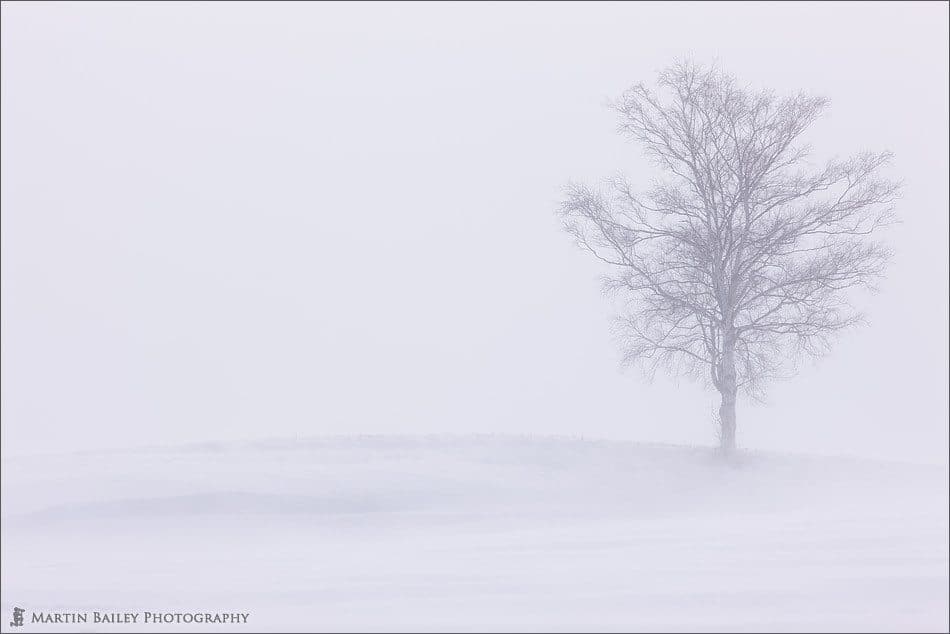
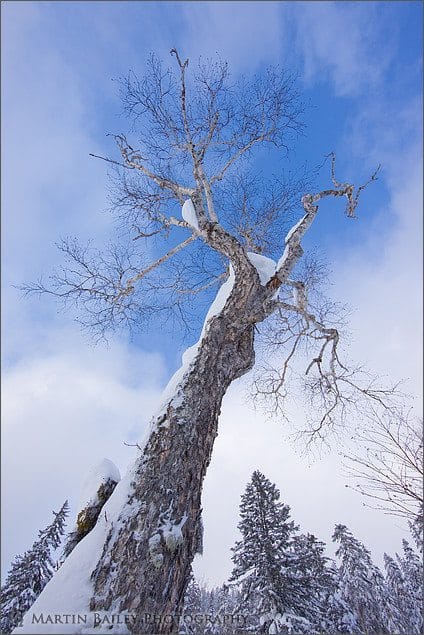
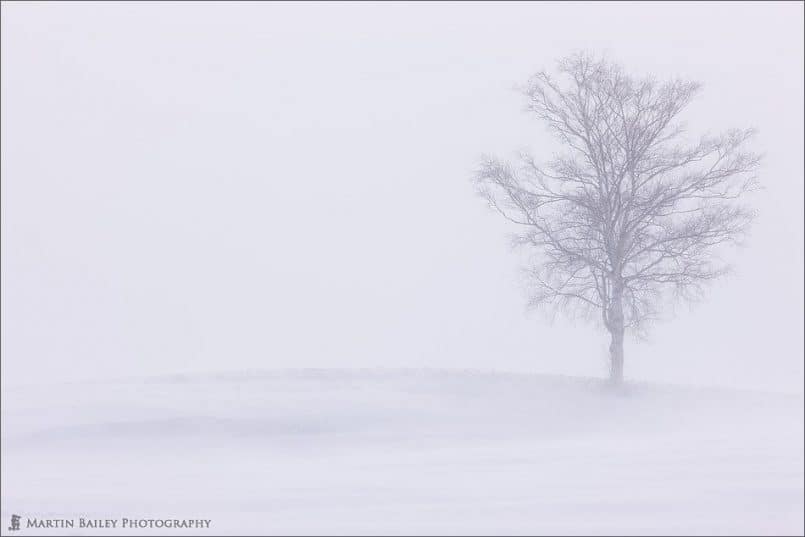


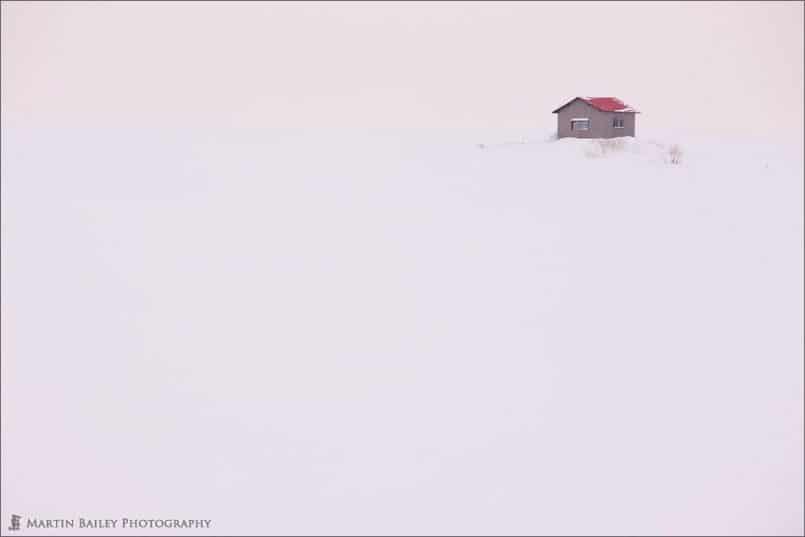







0 Comments